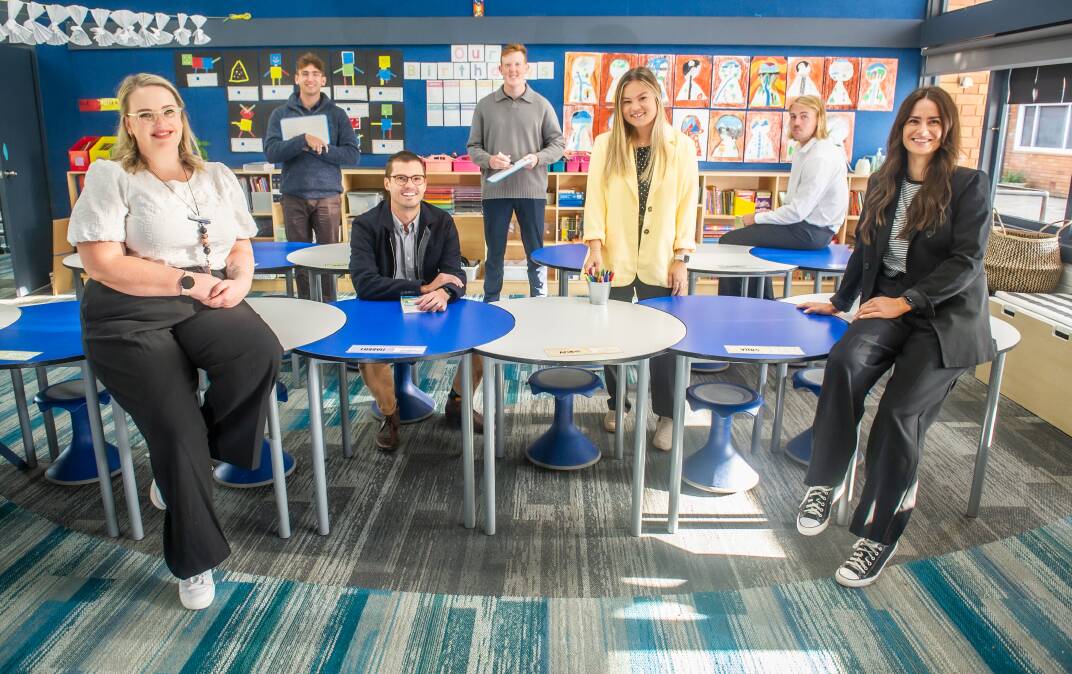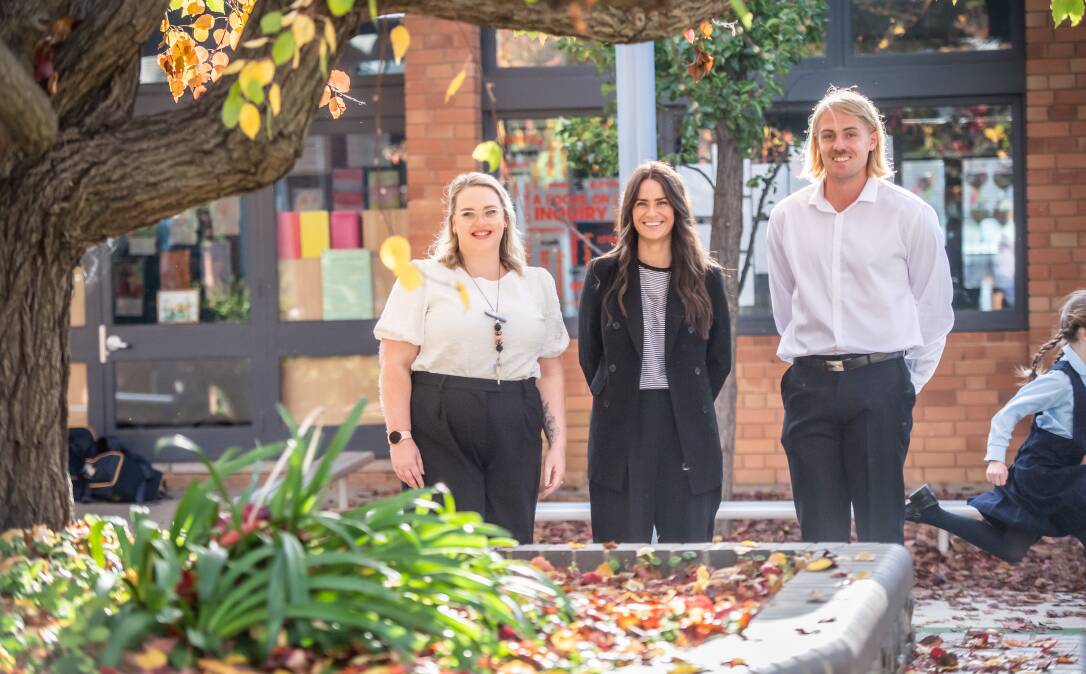
Lisa Wright feels like she's living her dream in her first year as a teacher at St Bede's Primary School in Red Hill.
Mrs Wright comes from a long line of teachers. She noticed growing up her mother, who worked at the school she attended, got a lot more satisfaction out of her job than other people.
"I just thought, 'That's it for me. That's what I want when I'm a grown-up'," she said.
"And now my daughter comes to school here with me, so it's the same sort of thing and I just love it."
The Catholic Education systemic schools in the Canberra Goulburn Archdiocese have employed 70 fresh teachers from university this year - the most new educators ever hired in one year.
Sixty of these teachers came to Canberra this week for two days of professional development, faith formation and networking.
'Not one-size-fits-all'
The beginning teachers are being taught high-impact teaching strategies in line with the system's Catalyst program.
Mrs Wright said she learned a variety of teaching methods through her university degree at University of Canberra but was seeing good results through direct, explicit instruction.
"Teaching is not a one-size-fits-all, so we did have to learn everything. To me, I enjoyed inquiry-based learning, but I see the results in explicit instruction," she said.
"As a nice little bonus, as well, I'm seeing that we're not having as many undesirable behaviours or anything like that because they're engaged the the whole time."

Year 2 teacher at Harrison's Mother Teresa School Erin O'Leary spent seven years working as a teaching assistant before deciding to become a qualified teacher herself.
"When I thought, 'I'm going to get into teaching', it just clicked and everything in uni then became more, not easy to do because there were challenges, but I guess it was more purposeful," Ms O'Leary said.
She was drawn to the holistic teaching in the Catholic system as well as the high-impact teaching and learning.
"A lot of teachers were really worried when when the idea of high-impact teaching came out that it was another thing that they had to add to the long line of things that they had to learn but ... teachers are starting to realise the impact it's having on learning," she said.
"As a new teacher coming in and seeing kids have this love for learning is the biggest thing. It makes my job easier."
With the well-documented shortage of teachers continuing across the country, University of Canberra Associate Professor in teacher education Emily Hills said any new teacher who wanted a full time job could easily find one.
"The teaching profession is desperate for educators," she said.
As one of the major suppliers of new educators for public, Catholic and independent schools in the ACT and NSW, the university aims to give their students a broad experience in different pedagogies.
Beating burnout
Teacher burnout is a hot topic among pre-service teachers. Many look at the grim stories about experienced teachers leaving the profession and early career teachers dropping out at alarming rates and wonder if their career choice is sustainable in the long term.
Associate Prof Hills teaches a unit about teachers as professionals which explores the struggle of balancing work with family and other personal commitments.
"One of the things that we focus on is ensuring that they are prepared for the realities of the real world of teaching," she said.
"We want you to have a long and joyful experience in the teaching profession. How are we going to manage the things that happen outside of the classroom efficiently and effectively to be to get that longevity?"
The number of people signing up for teaching degrees in the ACT has been in steady decline since 2014, with a sharp 20.2 per cent fall in 2018 and a further 17.3 per cent drop in 2019.
New teacher registrations with the Teacher Quality Institute fell from 787 teachers in 2015 to just 413 registrations in 2021.
The national teacher workforce action plan made recommendations to strengthen initial teacher education and to improve retention of teachers by reducing unnecessary workload and enhancing career pathways.
Each school sector has policies and programs to support new educators, including extra release time for planning, professional development opportunities and mentoring.
Role models
First-year health and physical education teacher Michael Thane said he felt well-supported by his mentors during his university practical placements and now on the job at Carroll College, Broulee.
"We team teach a lot with our practicals. They give me a lot of freedom to do what I want to do, but if I need they say, 'You can just watch me teach'," he said.
Practical classes for his students in warmer months meant swimming at the beach just five minutes from campus.
Mr Thane was guided into teaching at the end of his high school days and has landed a job down the road from the rival school he attended, St Peter's Anglican College.
He felt it was important for men to go into the female-dominated profession.
"More boys get in trouble than girls at school and ... we hypothesise maybe that there's not enough males in the system. They need that role model," he said.
Mr Thane found his strength going into the profession was being able to develop good relationships with students.
"You can have all the pedagogy in the world but if you haven't got the classroom management and relationships, you aren't going to go too far," he said.
We've made it a whole lot easier for you to have your say. Our new comment platform requires only one log-in to access articles and to join the discussion on The Canberra Times website. Find out how to register so you can enjoy civil, friendly and engaging discussions. See our moderation policy here.







